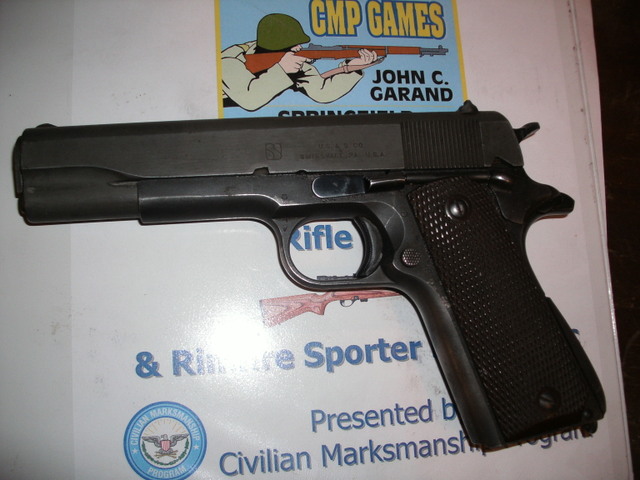In the first Gulf War I was a Corporal in the USMC. I was an electronics technician in an air wing radar unit.We were not combat arms types, but were deployed within 10k of the Kuwait border with Saudi Arabia.
I was issued a rifle before I left Kaneohe MCAS. I was issued 240 rounds within minutes of deplaning from the C5 that transported me from Hawaii to Saudi. I carried that rifle and ammo for 6 months. Day and night. I was never issued a pistol. Staff NCO's, Officers and certain people (like truck drivers) for whom a rifle was impractical were issued pistols.
When I was with the main unit in a large compound we were responsible for our own security. When I was part of a detached group that took a small radar to an area that was a blind spot for larger radars we had some infantry (USMC) in the area who we worked with for perimeter security. They did not seem to conform to the same handgun issuing rules as several Marines of my rank and below were carrying sidearms in addition to their rifles. But not all. I don't recall asking why. I just assumed it was an infantry thing.
I was issued a rifle before I left Kaneohe MCAS. I was issued 240 rounds within minutes of deplaning from the C5 that transported me from Hawaii to Saudi. I carried that rifle and ammo for 6 months. Day and night. I was never issued a pistol. Staff NCO's, Officers and certain people (like truck drivers) for whom a rifle was impractical were issued pistols.
When I was with the main unit in a large compound we were responsible for our own security. When I was part of a detached group that took a small radar to an area that was a blind spot for larger radars we had some infantry (USMC) in the area who we worked with for perimeter security. They did not seem to conform to the same handgun issuing rules as several Marines of my rank and below were carrying sidearms in addition to their rifles. But not all. I don't recall asking why. I just assumed it was an infantry thing.

